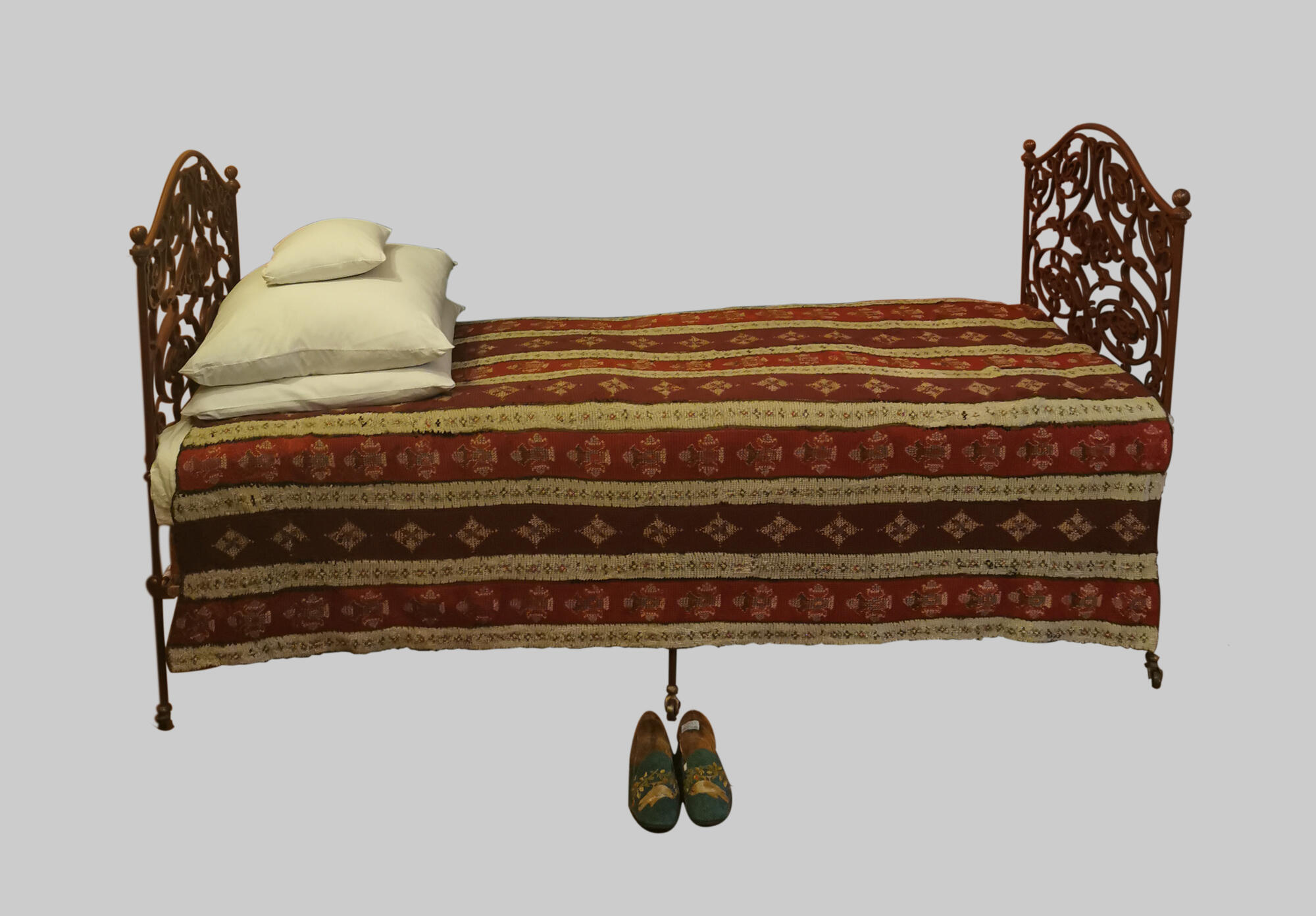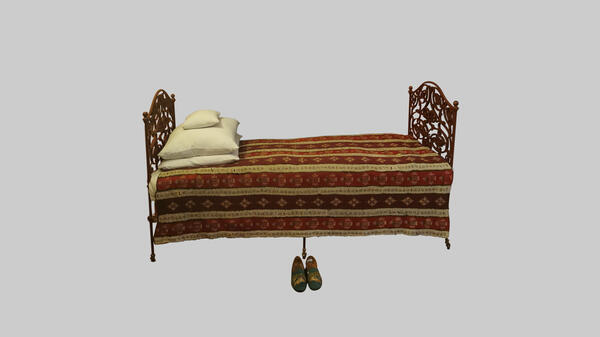For a long period of time, Russian people did not have the kind of beds we know today. For several centuries, both peasants and boyars slept on wide plank beds just below the ceiling, fitted between the stove and the opposite wall, as well as on wide benches and chests. The more traditional beds became available in the 17th century, but at first, only tsars and their high-class entourage had access to those. Apparently, Alexander Menshikov, the closest favorite of Peter the Great, assembled over 30 beds in his palace. At the beginning of the 18th century, furniture was either imported from England and the Netherlands or ordered from Russian craftsmen, who also used foreign designs. Royal palaces featured ornate decorative beds (on women’s half of the front enfilade), as well as simpler “daily” options. Russian emperors, including Paul I, Alexander I, and Nicholas I, slept on cots.
Beds did not become common until the middle of the 18th century. Those early models were very short, designed to sleep with your legs curled up. They were plated with gold, decorated with German wood carving, and painted on.
The bed of Pyotr Tchaikovsky has an iron frame and a cast iron headboard, all painted. The bed was constructed in the late 19th century — that is when beds were already full-size, with a length of just over two meters.
This bed with a spring mattress was purchased in the spring of 1888 for Tchaikovsky’s house in Frolovskoye estate. ‘PTch’ is embroidered on the bed sheet and pillow cases. There is also a crochet wool blanket on the bed. This was a gift from the composer’s niece, Anna Davydova-Meck. By the time Tchaikovsky moved into this house from Maydanovo, his servant Alexey Safronov had already brought the furniture and furnished the rooms himself since he knew his master’s taste. It took Pyotr a very long time to get used to the new arrangements, which is why there was always the same placement of furniture, paintings, and photographs in all estates of the Klin District where he lived. The furniture in the house, including the bed, has remained in the same spots since those times.
When at home, Pyotr Tchaikovsky would always stick to his daily routine. The composer would start the day at 6–7 o’clock in the morning. He got dressed, prayed, and worked on his pieces in the bedroom.
Beds did not become common until the middle of the 18th century. Those early models were very short, designed to sleep with your legs curled up. They were plated with gold, decorated with German wood carving, and painted on.
The bed of Pyotr Tchaikovsky has an iron frame and a cast iron headboard, all painted. The bed was constructed in the late 19th century — that is when beds were already full-size, with a length of just over two meters.
This bed with a spring mattress was purchased in the spring of 1888 for Tchaikovsky’s house in Frolovskoye estate. ‘PTch’ is embroidered on the bed sheet and pillow cases. There is also a crochet wool blanket on the bed. This was a gift from the composer’s niece, Anna Davydova-Meck. By the time Tchaikovsky moved into this house from Maydanovo, his servant Alexey Safronov had already brought the furniture and furnished the rooms himself since he knew his master’s taste. It took Pyotr a very long time to get used to the new arrangements, which is why there was always the same placement of furniture, paintings, and photographs in all estates of the Klin District where he lived. The furniture in the house, including the bed, has remained in the same spots since those times.
When at home, Pyotr Tchaikovsky would always stick to his daily routine. The composer would start the day at 6–7 o’clock in the morning. He got dressed, prayed, and worked on his pieces in the bedroom.


